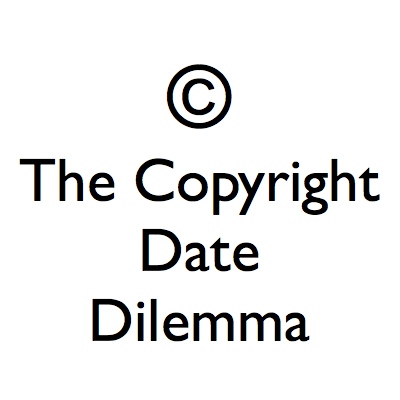In the early years of the Internet, it was common for a website to have the year of launch as the copyright year. The older the date, the more impressed site visitors would be with how old and presumably well-established and reputable the site was. It was similar to businesses having pride in their date of establishment.
Today, most websites have the current year as their copyright. This is primarily done to convey to site visitors that the site is current. It’s also an acknowledgement that websites are constantly having content added and updated. Websites are no longer like books or other completed works and intellectual property. They are constantly changing in their design and content.
Here are some thoughts to consider about copyright dates.
- Changing Views About Copyright. About 10 years ago, there was a perception that not only would the text and pictures of a website be protected by copyright, but also the other intellectual property making up a site’s design would be protected. Thus, when a major revision would be made (even if no written or graphic content was changed) people would have their copyright date reflect those changes. Today it seems that trademarks and patents are better suited for the programming code that makes up web design. Copyright generally covers intellectual property in the format of text, images, video, and music. Graphic design, depending on its use (if for business) may fall under trademark instead of copyright (unless it’s artistic design). For example, we would say that a business logo is trademarked, but we probably wouldn’t say it’s protected by copyright. More about these distinctions can be found here: http://www.copyright.gov/help/faq/faq-protect.html
- First to Market. About 10 years ago, having an older copyright date was a way of subtly conveying the well-established nature of a website. With regard to intellectual property, it was a way of demonstrating that one was first to market with something. This is helpful in a court of law for a dispute about the use of a trademark. For example, if you own a domain name that was launched many years ago, and someone recently started a business under that name, they could try to claim ownership of the name. In this case, having an older copyright date works in your favor. Many people use a date range to provide the original publishing date, while at the same time conveying that the content is also kept fresh and updated.
- Changing Use of Websites. In the past, websites mostly consisted of pages. The pages were, for the most part, static content. Websites were typically a digital online version of materials that were already available in printed format. Initially, the printed format was more attractive and easier for people to create and access. Neither the printed or online versions changed substantively over time. As we’ve increasingly disconnected from static printed content, and moved toward dynamic real-time data and information, it’s more difficult to say precisely “when” a creative work was published. Is the creative work the entire website? If so, it is an ongoing creation without a final publishing date.
- Individual Articles. The idea of a copyright date is mostly founded in the world of printed publications or other forms of media that are more permanent. In the case of websites, this is less relevant. Individual articles that are published as posts can be considered complete works, and these usually have a date of posting indicated with them. The posting date is a de facto copyright date in the sense that it establishes when the content was first made public.
- Removing Copyright Dates Entirely. In light of the above, it’s become increasingly common to have no copyright date or year assigned to dynamic digital media. Those who still use dates are perceived to be living in a digital era but thinking as if they are in a print era. The White House, for example, does not use the traditional “Copyright 2013” disclaimer that’s found on most websites. Instead, they have a copyright statement page – a practice being increasingly used. The copyright used by the WhiteHouse.gov website is the Creative Commons copyright found here http://www.whitehouse.gov/copyright
- Copyright Disclaimers Are Meaningless. As mentioned above, the White House and millions of other websites don’t attempt to use the relatively meaningless “Copyright 2013” statement. Those who are familiar with copyright law recognize that such disclaimers convey nothing about the copyright guidelines and intentions of the intellectual property owner. There are indeed many different ways to define how you want your copyrighted work to be protected, handled, credited/attributed, and shared (if at all). It’s more meaningful and effective to do as the White House has done, and create a page describing the institution’s copyright guidelines. A good introduction is provided here: http://creativecommons.org/licenses/
- Varying Types of Copyright. In something as large as an enterprise website, it’s conceivable that some content would have more lenient copyright restrictions. Perhaps a photo is used on the website that was taken by a photographer who would like to be credited if their work is re-used.
- On Your Honor. The system of dating content on the Internet is entirely an on-your-honor system since anyone can post anything with any date. As a result, any disputes would usually be resolved by referring to third party archived web content such as the Archive.org Way Back Machine archive system.
